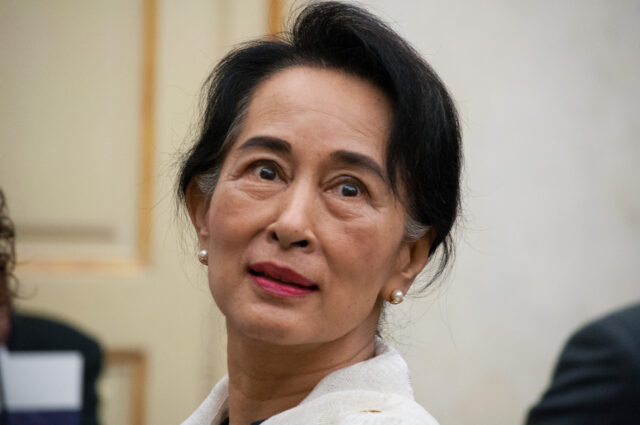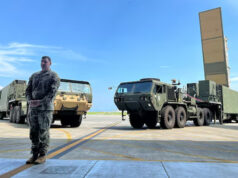PUNE: Myanmar was to transition into a new phase of democracy on February 1, 2021. The ruling National League for Democracy (NLD) returned to parliament after winning the second election in a country with a long history of military rule. The victory was a signal that Myanmar was firming up the institutions of democracy and enshrining the power of the people to elect the government they wanted. But as the day when the new parliament was to convene dawned, the army rounded up senior party officials and likely government ministers and declared a state of emergency for one year. State Counsellor Aung San Suu Kyi and President Win Myint were also detained, with the army run television channel announcing that General Min Aung Hlaing, the army chief, was in charge. Important to note that all this was done under the existing constitutional framework where First Vice-President Myint Swe, a military nominee, signed the declaration of emergency.
Myanmar’s experience of democracy is barely five years old. Suu Kyi led her party to a landslide victory in 2015 after almost half a century of military rule. This time too, Suu Kyi’s NLD returned to power with a record majority of 80 per cent of the vote. The army-backed Union Solidarity & Development Party performed poorly. But the Constitution (a document largely authored by the army) reserved for it (without contest) 25 per cent of seats in parliament. The coup had its origins in this very clause. The excuse for the coup was the charge of widespread polling fraud by the NLD government, a charge denied by the Myanmar election commission. Be as it may, the reality is the army is firmly in the saddle. Will a civilian government ever return? There is no easy answer. On the face, it appears to be a blatant power grab by the army but Suu Kyi also shares some of the blame.
Complex Ethnicity
The military is nobody’s favourite, given its iron fisted rule over the country since 1962, but to be fair, even it may have found running a country divided into many tribes, cultures and religions, difficult. The dangerous mix of religion and ethnicity has seen as many as 17 rebel groups at odds with the government of the day. Before Suu Kyi came to power, the army was fighting four major and ten minor insurgencies. In each corner of the country, armed rebel groups undermined central authority.
The insurgents hold sway in the jungles and mountains spread all over the country, making it extremely difficult for the army to exert control. When Suu Kyi’s party came to power in 2015, hopes of peace revived and a ceasefire agreement was signed with eight major insurgent groups. It largely held for about a year despite small incidents and pinpricks, but then the Rohingya massacre took place.
Suu Kyi is faulted for her inability to bring the insurgent groups and minorities into the democratic mainstream. It appeared she was okay with the army taking on the insurgents (and the casualties it entailed), and distanced herself from the harsh realities of the ethnic cleavages in Myanmar. No reforms or policies were announced to benefit minorities. She is alleged to have largely focused on consolidating her power base in the party and in the ethnic Burmese heartland. Her critics say that she did not try to bring the nation together as deep down, she believes in the ethnic superiority of the Burmese Buddhist majority community. She even banned minority communities from voting in the November 2020 elections, an irregularity cited, ironically, by the army.
But her biggest failing was her handling of the crisis triggered when Rohingya separatists in Rakhine state launched a coordinated attack on 24 army border posts in August 2017, killing a dozen military personnel. It led the army to carry out operations to clear out the separatists, leading to the massacre of Rohingya civilians. Later the army struck a deal, announced a ceasefire on the understanding that Suu Kyi would declare elections but her refusal to do so was seen as a big letdown by the army. Her stout defence of the army’s actions in the International Court of Justice at The Hague did not help matters. The army saw her as someone untrustworthy.
The army was also disappointed over what it saw as her government’s poor economic performance. The brass was hopeful of Suu Kyi bringing in foreign investment from the West, which would boost the economy and improve the country’s political capital. Curiously, Suu Kyi courted China’s President Xi Jinping instead and brought in Chinese investment. The Myanmar military has always had a guarded relationship with China because of its support of insurgent groups opposed to Yangon. Add to that the negative perception of how Chinese companies operated in Myanmar. The straw that broke the camel’s back may have been her move to cut the army’s 25 per cent hold over parliamentary seats to five per cent. The move failed.
Transition from dictatorship to democracy is always complicated. The army which stands to lose considerably has to be managed with various lifelines. When that doesn’t happen, the transition gets hit. For Myanmar’s army chief Gen. Min Aung Hlaing, with only months to go for retirement, it may have become apparent that if this situation continued, the army would lose its power and status. A second term for Suu Kyi could spell the death knell for the army. So the army slowly ratcheted up the coup rhetoric with only the politically blind missing the signals. The army was looking at guarantees for the future but there was nothing from Suu Kyi.
Is democracy now dead in Myanmar? That’s a difficult question to answer. Whether the ethnic Burmese heartland will take on the army is not clear. For those in border areas, the situation vis a vis the army never really changed. With the army clampdown gathering steam, it is impossible to influence them as they are a lonely but well-endowed community. Sanctions will hurt them less than ordinary people. This underscores a peculiar character of the Myanmar army: it is fighting in all corners of the country but finds no support from the heartland it claims to represent. For the sake of the people of Myanmar, one hopes that a rapprochement is achieved without further bloodshed.
(The author is a former Artillery officer, headed College of Defence Management, one of the most prestigious training institutes of the Indian military, and is also a strategic affairs analyst. Views expressed in this article are personal.)





